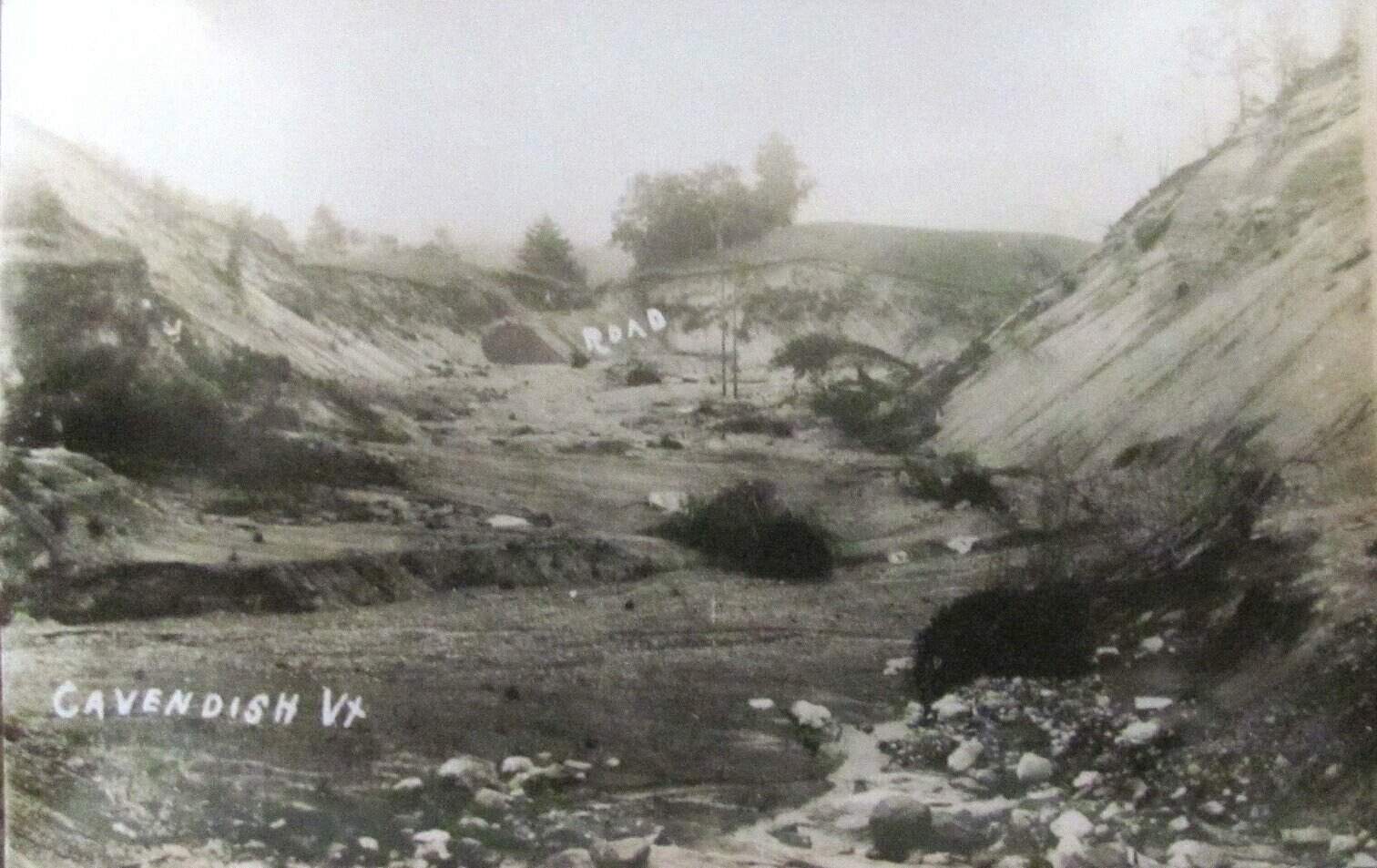
It was Nov. 2, 3, and 4, 1927, when Vermont suffered a catastrophic flood. The following is from, “Floodtide of 1927.”
“The Village of Cavendish furnished one of the major calamities of the flood. Cavendish lies in a fairly level plain, about ten feet above the level of the Black River. Its main street runs in a straight line. At its upper end, the river swings off away from the street at a small angle. A short distance out of town is a dam across the river, about 100 feet long, which holds a good-sized pond.
Water from this pond used to leak over the side into low land in the rear of the houses on the main street. Therefore, a few months ago, a dike about five feet high was built on the place.
From the opposite side of the road, a little brook used to run into the pond at the spot where the dike was built. Instead of running into the pond, the brook’s course was altered to run parallel to the road out of town, after crossing the street.
The brook’s altered course took it through a notch between two high hills. As the crest of the notch was too high to take the water over, a galvanized iron sluice was built to carry the brook 25 or 30 feet under ground, through the gap.
The waters of the Black River spilled over their banks late Thursday. The entire main street of the village was several feet under water. Then, in the evening, the waters of the pond spilled over the 5-foot dike into the former bed of the little brook.
This immediately became a hideous torrent, which twisted and turned its way down the course of the little brook. When it reached the sluice under the gap, it is assumed, the volume was too great for the capacity of the pipe. The stream, which was by now in reality the whole course of the river, rose and rose. At the same time, water was running down the street and the fields.
Within a short time, the confined waters rose and plunged over the notch between the two sand hills. It was then that the worst of the damage began. As the bed of this sudden cataract was nothing but loose gravel and sand, a backward erosion began immediately, exactly after the fashion of Niagara Falls, only infinitely more rapid.
When this rampart of earth gave way, the water in the stream bed was free to roar through at a prodigious rate, ripping and tearing tons and tons of soil from the bottom and from its banks. At the same time, tons of water poured into the widened crevasse from the flooded street, and erosion began on the side.
In the beginning, the rising brook was some distance from the road. But, as the water rose and dug deeper, the banks began to recede. Within a few hours, the houses began to collapse into the abyss, their foundations washed away. They fell so far that they seemed to collapse in the air before they struck the water.
The two hills are eaten away to their summits. It is perhaps 600 feet from crest to crest. The main street has vanished into nothingness. The gorge varies in depth from 100 to 400 feet.
Seven houses were lost with ten barns and four garages. Tony Prockelevitch and his wife and five children, got out just in time before their house and all its contents, with a considerable sum of money, went down. The next house to go was Mrs. Lucy Sperry’s. She and her sister, Mrs. Mary Bigelow, were carried out with just the clothes on their bodies. Mrs. Esther Spafford’s house went next.
At 10 o’clock, T.O. Perkins, who was keeping his store open that night, went home and carried Mrs. Perkins out on his back. His house was next to go, nothing saved. Mrs. Ina Butler’s house went next, then Harry Bemis’, then the ell part of Mrs. Cornelia Bemis. Their goods were mostly removed. The stream had then worn a bed down and struck ledges, which were the salvation of the rest of the street. In the morning R.P. Minch’s house went…”
The next meeting of the Chester Historical Society is Thursday, July 28, at 7 p.m., at the Academy Building. The slideshow will be old Vermont covered bridges, steam locomotives, and a few peddler’s wagons.
This week’s old saying: “It’s weird being the same age as old people.”